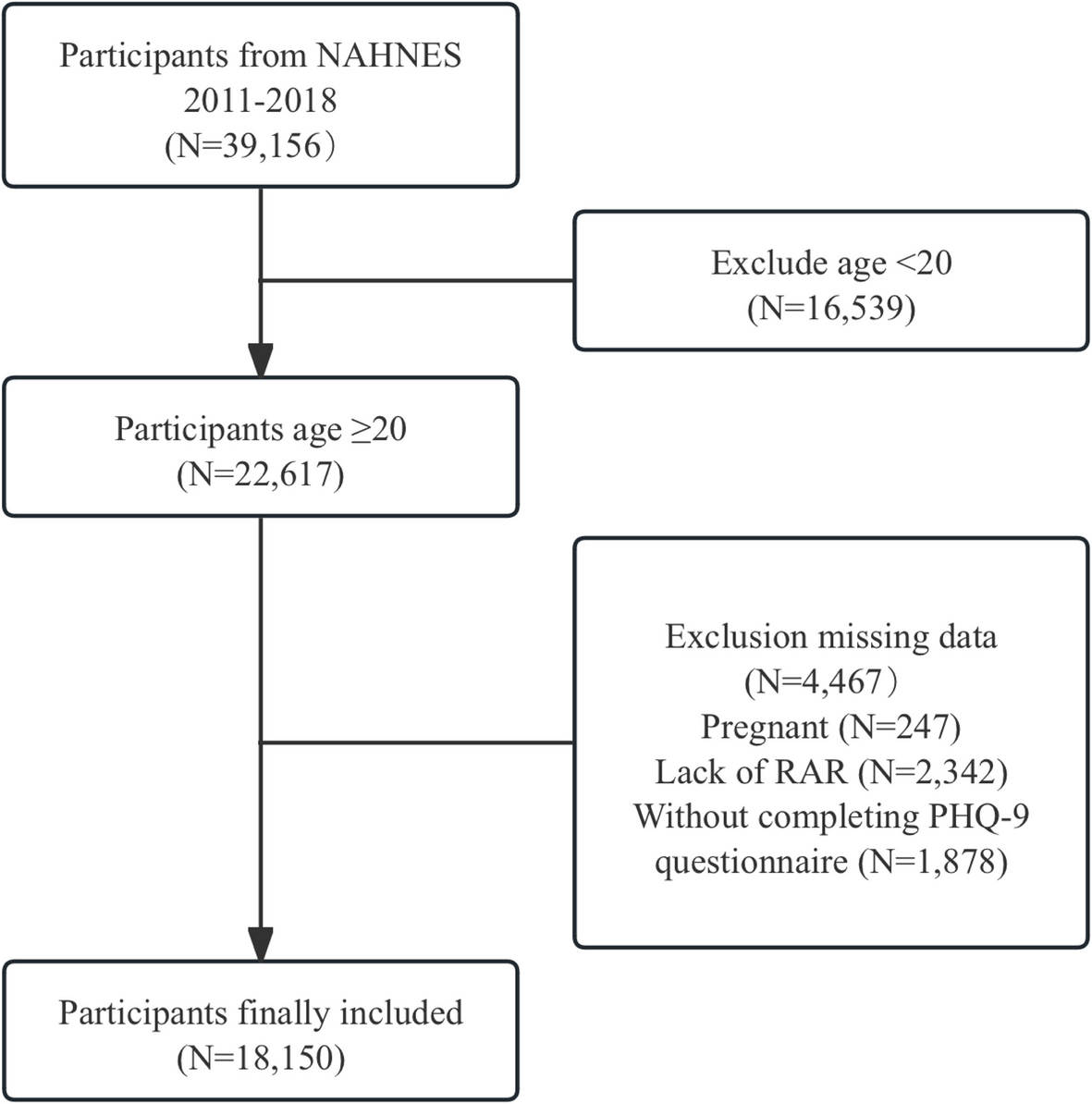A recent analysis published in BMC Psychiatry examines the connection between the red blood cell distribution width-to-albumin ratio (RAR) and depression among U.S. adults from 2011 to 2018. Researchers utilized the National Health and Nutrition Examination Survey (NHANES) data to explore this relationship, revealing important correlations.
The study involved 18,150 participants aged 20 and older, employing multivariate logistic regression and receiver operating characteristic (ROC) analyses. The findings indicate that a higher RAR is positively associated with an increased likelihood of depression. Specifically, each one-unit increase in RAR correlates with a 22% higher risk of depression. Individuals in the highest quartile of RAR exhibited a 30% greater risk of depression compared to those in the lowest quartile.
Demographic details revealed that the association between RAR and depression was notably stronger in men, those who consume alcohol, and higher-income groups. This highlights the potential for RAR to serve as a reliable and cost-effective predictor of depression in clinical settings.
Depression, characterized by persistent low mood and reduced motivation, affects around 280 million people globally, according to the World Health Organization. The disorder is increasingly prevalent among young people, particularly in affluent areas. Research has established that inflammation plays a role in the development of depression, with patients often showing elevated levels of inflammatory biomarkers.
The RAR combines two laboratory metrics — red blood cell distribution width (RDW) and serum albumin — both of which reflect aspects of inflammation and nutritional status. Prior studies have indicated that RDW is associated with various health conditions, including heart disease and stroke, while low serum albumin levels have been linked to depressive symptoms across several psychiatric disorders.
The current study posits that RAR might be a more effective indicator of depression than RDW, albumin, or the hemoglobin-to-RDW ratio. Researchers emphasize the need for further large-scale, prospective studies to solidify the role of RAR in understanding and predicting depression.
Using NHANES data, the study followed strict reporting guidelines and maintained a rigorous approach to data collection and analysis. Participants completed the Patient Health Questionnaire-9 (PHQ-9) to assess depression, with a score of 10 or above indicating the presence of depressive symptoms.
In conclusion, this research suggests that higher RAR levels are associated with an elevated risk of depression among U.S. adults. The findings underscore RAR’s potential as a straightforward laboratory biomarker for assessing depression risk, advocating for its inclusion in clinical assessments. As the prevalence of depression continues to rise, identifying reliable indicators can play a critical role in early detection and intervention strategies.



